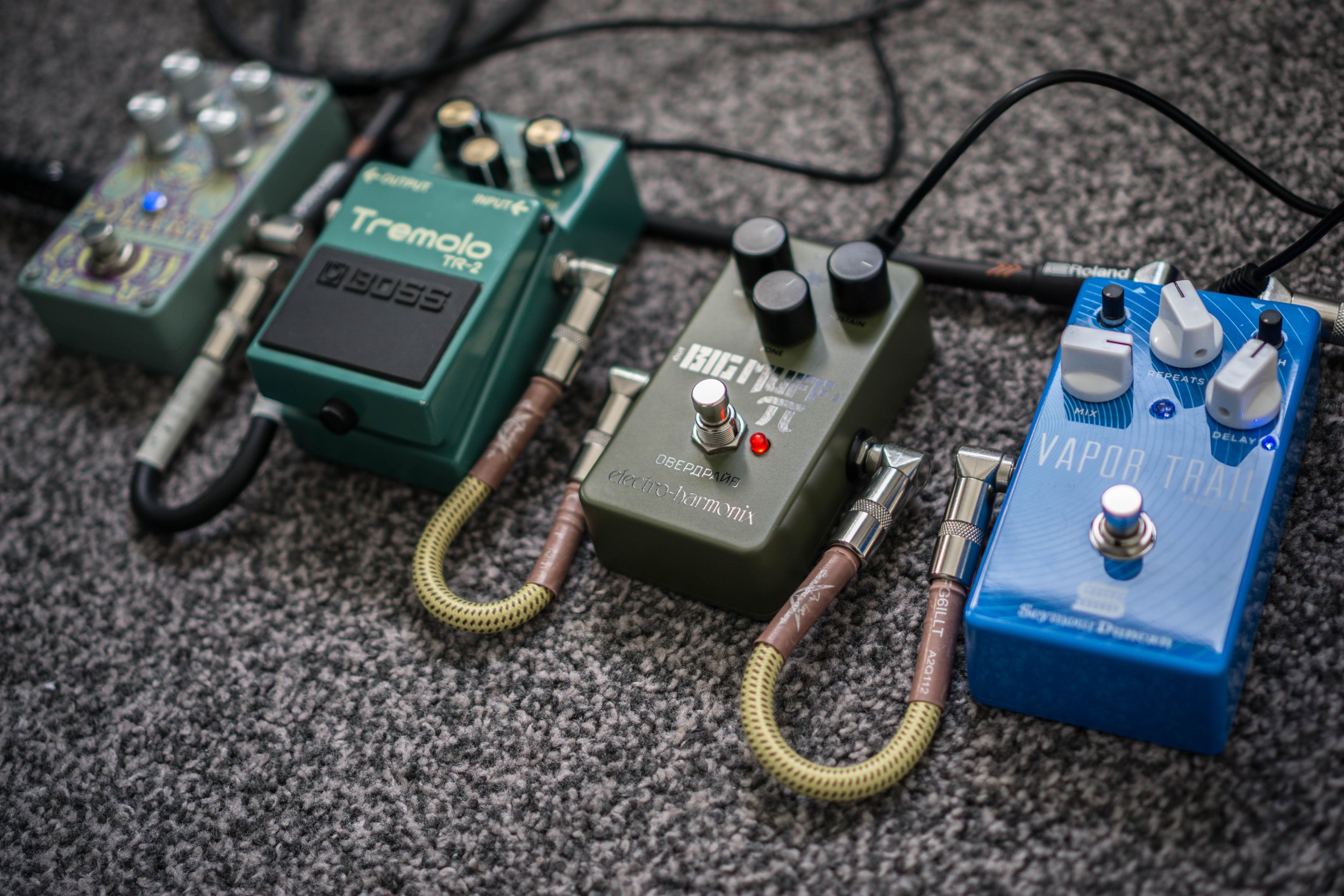Seymour Duncan Vapor Trail
Improving on the analog formula.
Seymour Duncan is a company best known for their pickups, but they also make high-quality effects pedals and amplifiers. Just like their pickups, Seymour Duncan pedals are made in the U.S.A. and offer a great price-to-performance ratio. Their Vapor Trail analog delay is no different.
In addition to excellent build quality and conveniently placed top-mounted jack sockets, the Vapor Trail offers a rather unique set of features. It is rare enough to have modulation on an analog delay, you also get easily accessible controls for its rate and depth. In practice, it can be a bit tricky to dial in a pleasing modulation sound, but, luckily, the user manual has some sample settings.
The other standout feature of the Vapor Trail is the wet output, located on the side of the pedal. Connecting a cable to the wet output will split your wet (delay) and dry (original) signals to the wet and regular outputs of the pedal. This lets you get very creative with your delay tones. You can add a phaser, fuzz or a tremolo to your delay signal while keeping your dry signal intact. You can then either send the wet signal to a separate amp for a stereo setup or combine them, using an ABY connector or a pedal with stereo inputs. This feature is quite cool and lets you use the Vapor Trail in very creative ways, but it is somewhat impractical. This would have been much more usable if the pedal just included a return input for the wet signal and combined both of them at the output.
Alright, with the flashy features out of the way, how does the actual delay sound? Great! While it would have been nice to just get a tone control, Seymour Duncan tuned the Vapor Trail very well. It has got just the right amount of mids and highs to cut through a mix, while retaining the warm tone of the Bucket Brigade chip, that all analog delays are known for. In terms of brightness, I would place it somewhere between an MXR Carbon Copy and a Carbon Copy Bright. As you’d expect, the clarity degrades with each repeat, but much less so than on the Boss DM-2W.
The maximum of 600ms is pretty standard and will let you dial anything from slapback to some longer ambient delays. You still get the signature pitch shifting, when adjusting delay time, but it is much easier to control, compared to the DM-2W. This means that dialling in a good tone is easier, but you lose out on some of the glitchy effects you can get with the Boss. The lack of expression pedal support further reinforces this limitation.
The repeats (feedback) control is also very versatile and will allow for anything between a single repeat of the original signal and out-of-control oscillating madness. Just like with the delay time and overall tone, Seymour Duncan have tuned the feedback to sound great in any position.
In terms of ease of use and overall tone, I would definitely pick the Vapor Trail over MXR’s Carbon Copy or Boss’ DM-2W. It is, however, missing some of the magic of the DM-2W. I wasn’t able to get the crazy oscillating warp sounds from the Seymour Duncan that I am so fond of with the Boss pedal.
Bottom Line
The Seymour Duncan Vapor Trail is an incredible analog delay pedal. It is packed with unique features, built like a tank (in the U.S.A.) and sounds better than any analog delay I’ve tried. At £140 pounds, it is very competitive with other pedals. It would have been great if they included a wet return input, as well as a tone control, but that would have likely pushed up the price. In fact, some of these features are available on the Vapor Trail Deluxe!



